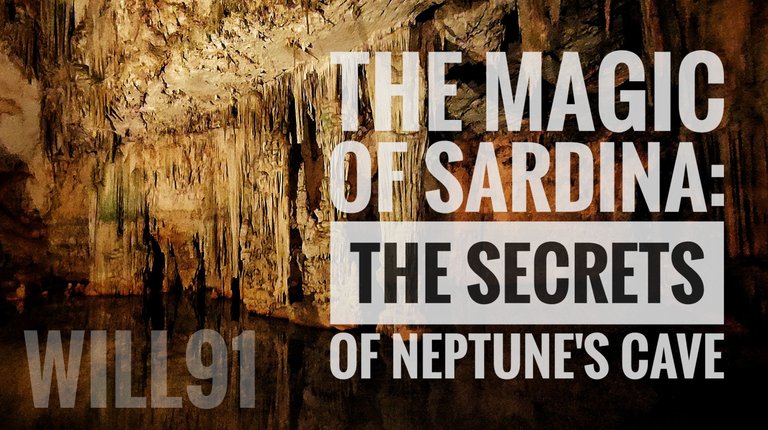
-Joseph Campbell-
Intro
Here we are for the last trip based in Valledoria, in the next trip we will start from another destination: Alghero.
This time we are going to visit one of the most special natural attractions of the west coast, the beautiful Neptune's cave.
A stage frequented by tourists in almost all seasons and that requires a good physical performance to climb and descend the way to reach to the cave.
The journey
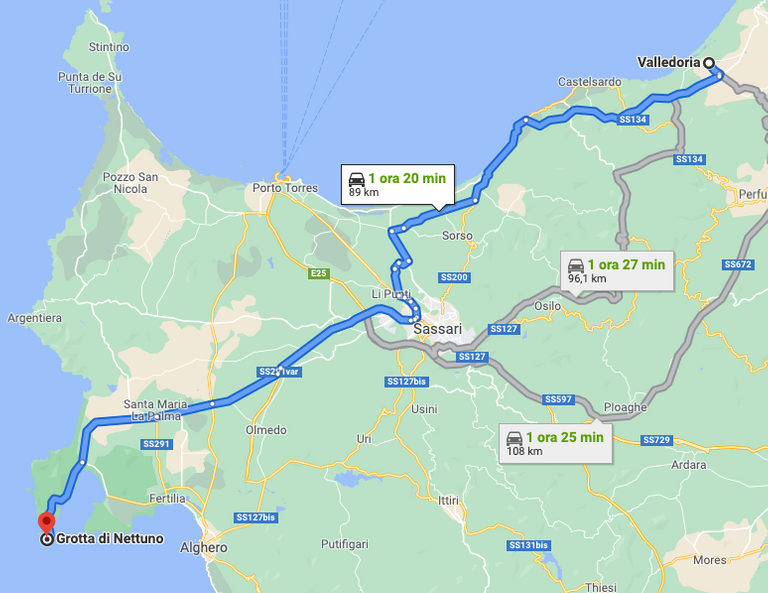
To get to the cave from Valledoria the route takes about 1 hour and a half, the cave is located on a hill called Capo Caccia which is located northwest of the island.
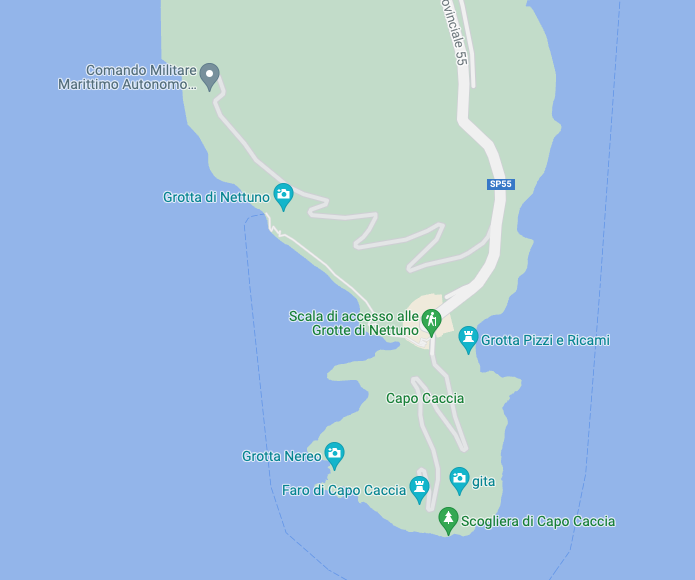
Capo Caccia can be reached quite easily by car or motorcycle, and for the most daring also by bike, at the top of Capo Caccia there is access to the long staircase leading to the cave, in front of the access there is an open space with a parking lot, a bar and the ticket office for the tour to the cave.
Numerous guided tours of the cave are given daily, online reservations are required at the site below.
Editor's note: All of the images you'll see in this post were made by me, exclusively for the #HaveYouBeenHere community, and for the amazing project of @pinmapple.
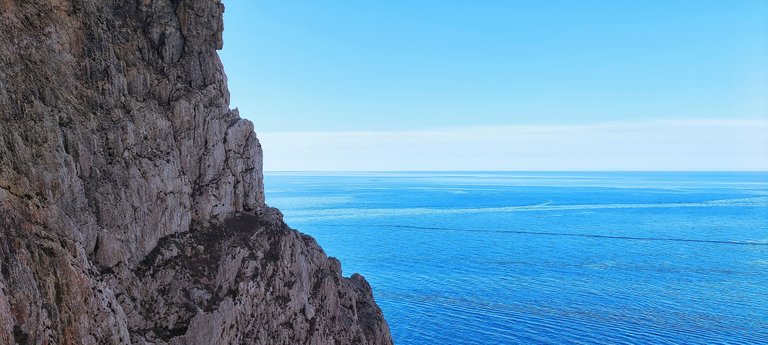
Here we can admire the beautiful view of the sea when we arrive at Capo Caccia, from here we see the beautiful view of the sea, we just have to start our adventure to discover this wonder 😄.
To the Neptune's Cave
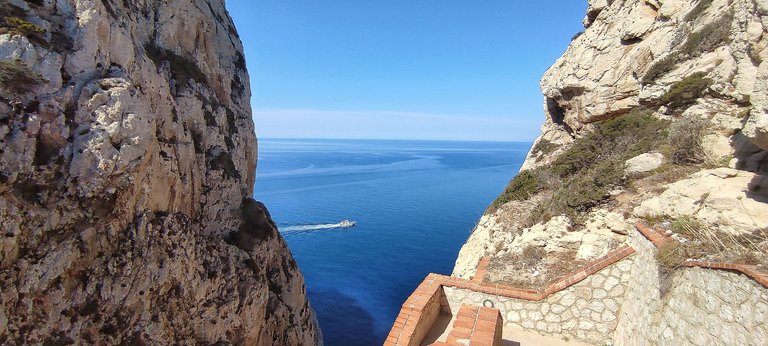
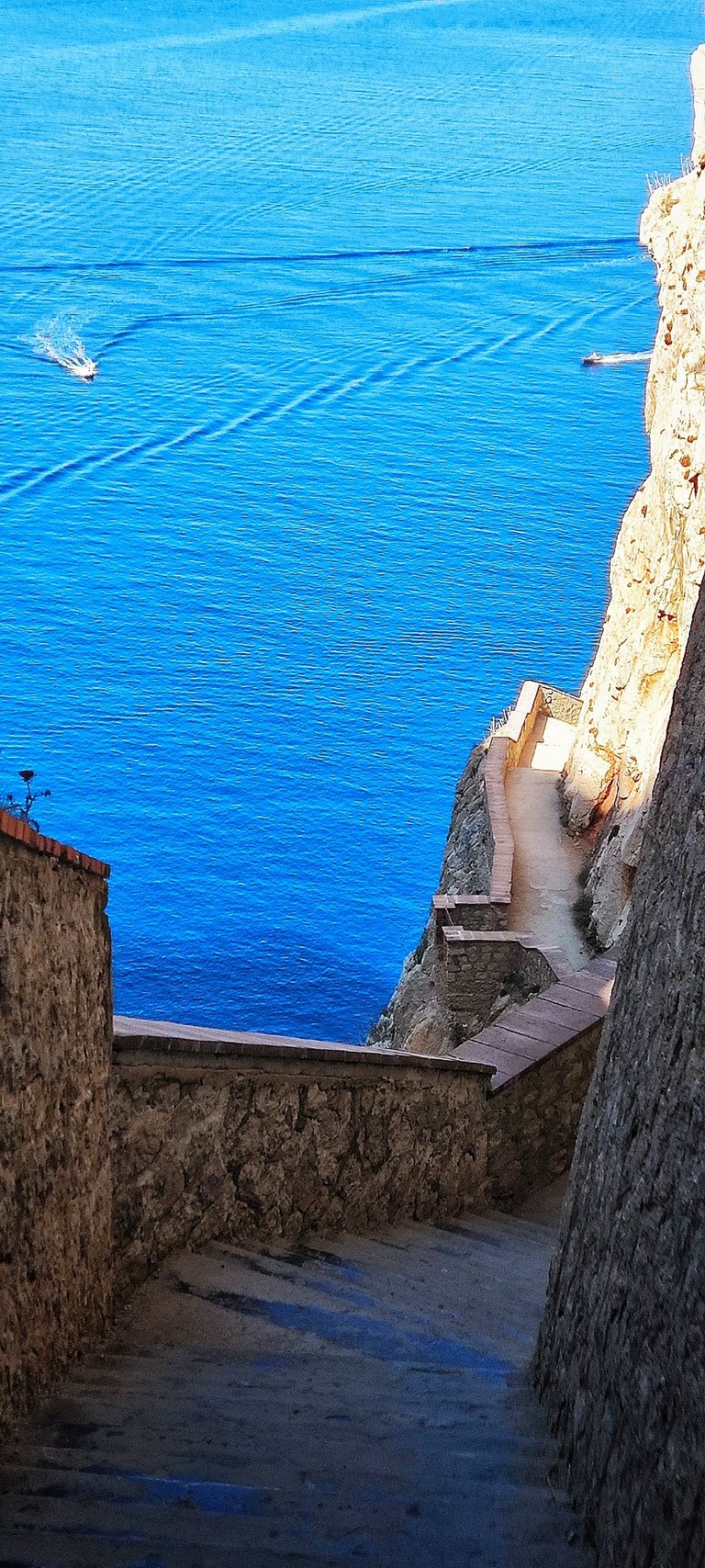
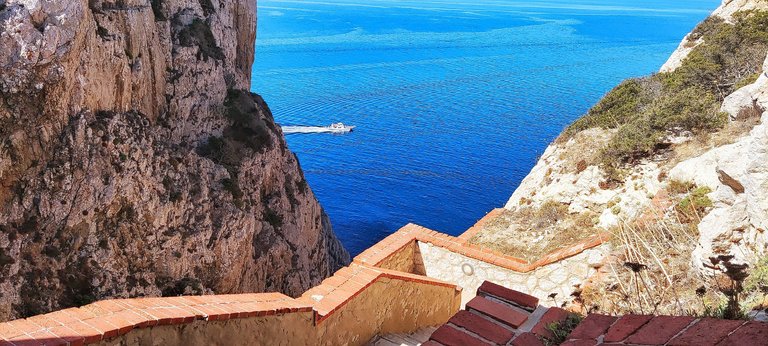
To get to the cave of Neptune, you must descend a staircase of 654 steps called "the staircase of the roe", the difference in height is 106 meters and the path is 470 meters long.
It is also possible to reach the cave with special boats that can be booked from various points along the coast, but the real fun is to go down the stairs and admire the breathtaking view.
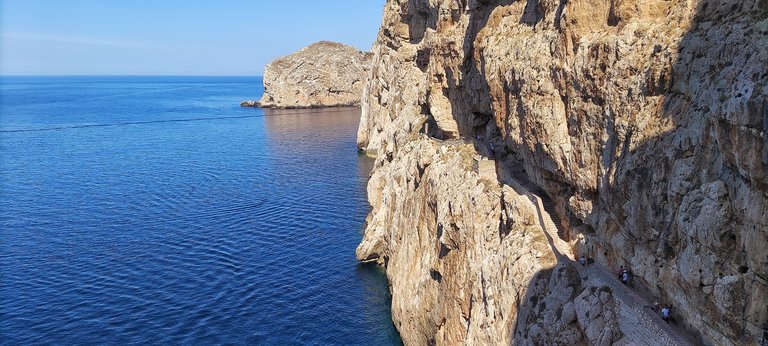
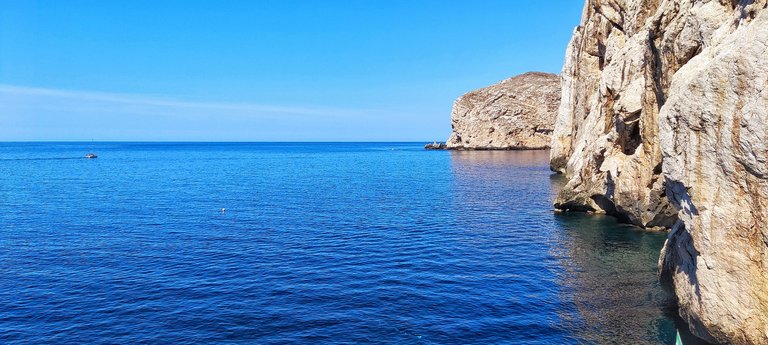
The walk leads to an altitude of a few meters above sea level (4 or 5 meters) and in fact the cave is accessible only with good sea conditions.
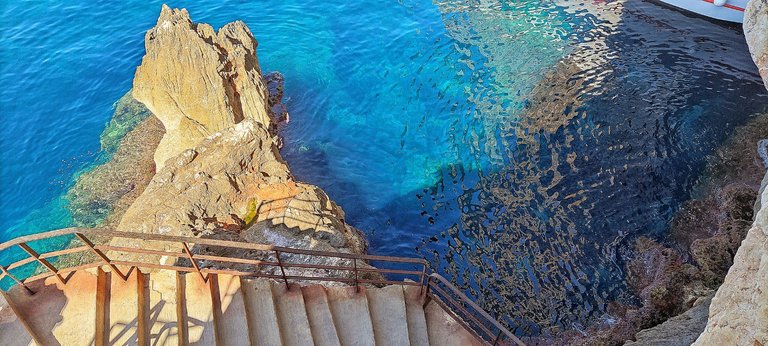
The staircase of the roe is very well made, on the path there are several vantage points from which you can admire the intense blue of the Sardinian sea.
Visiting the Neptune's cave
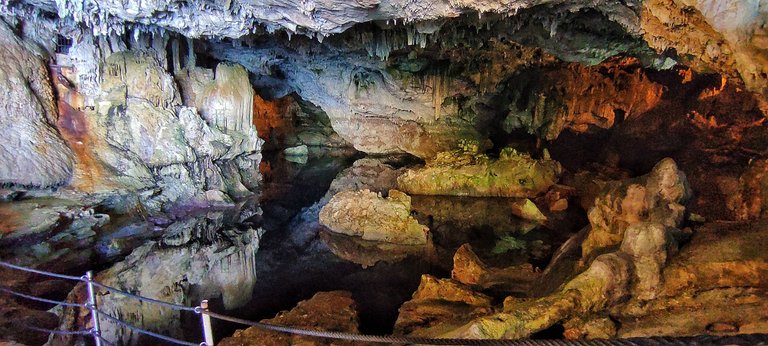
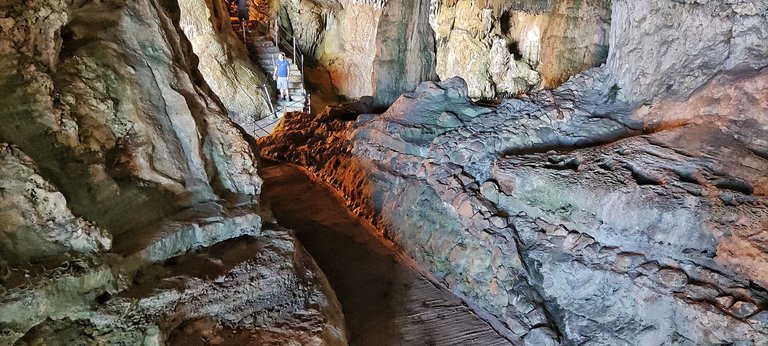
Finally... Here we are at the cave, the most beautiful part of this adventure begins!
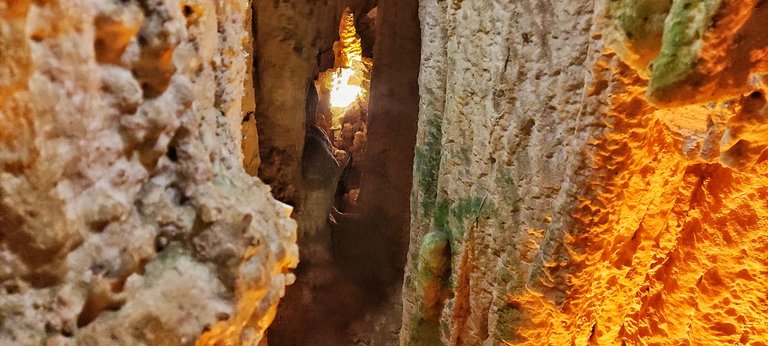
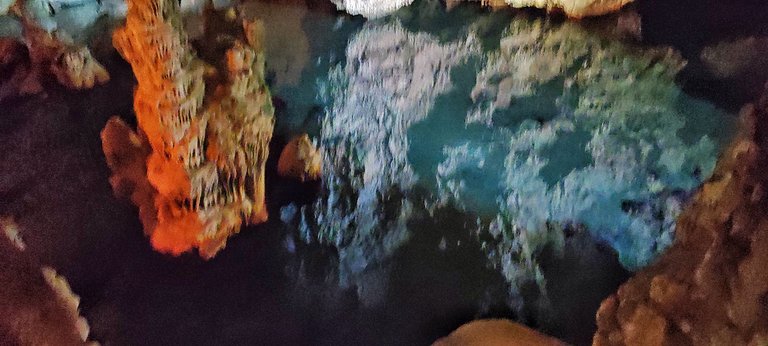
Neptune's Cave is a karst formation discovered by a local fisherman in the 17th century and named like the god of the sea.
Inside, the cave is organized as a villa, in fact there are several rooms that take their names from some particulars they have inside.
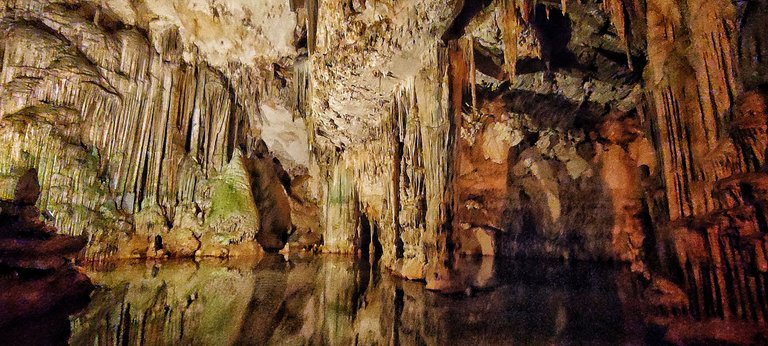
- Lake La Marmora: underground salt lake with a depth of about 9 m for and maximum width of 25 m and length of 100 m, at its center is a large column called Acquasantiera, at the bottom of the lake a formation of stalagmites called Christmas Tree;
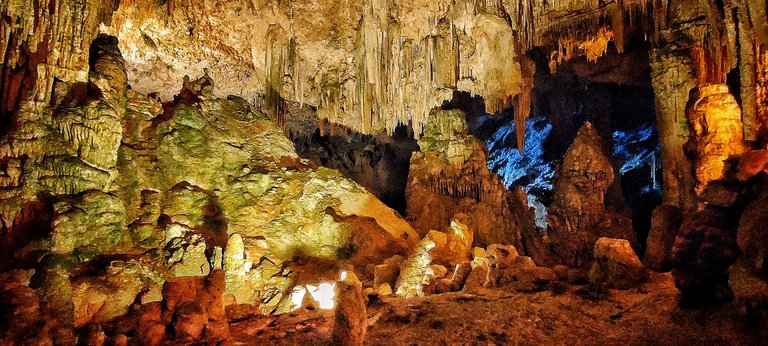
- Room of the Ruins: name due to the many gaps in the rock that are derived from the fact that in '800 visitors were used to steal some fragments of stalagmites and stalagmites of which today you can still see the lacks;
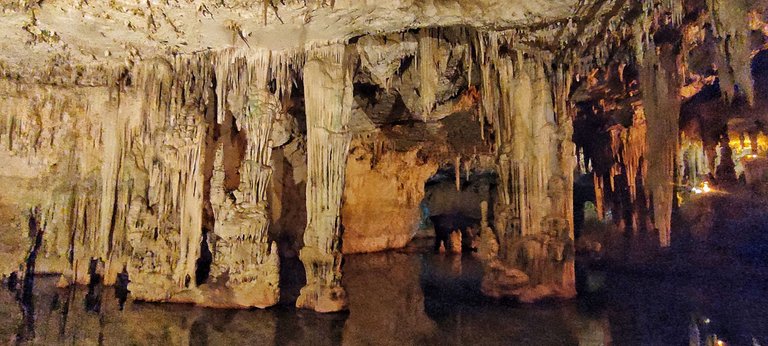
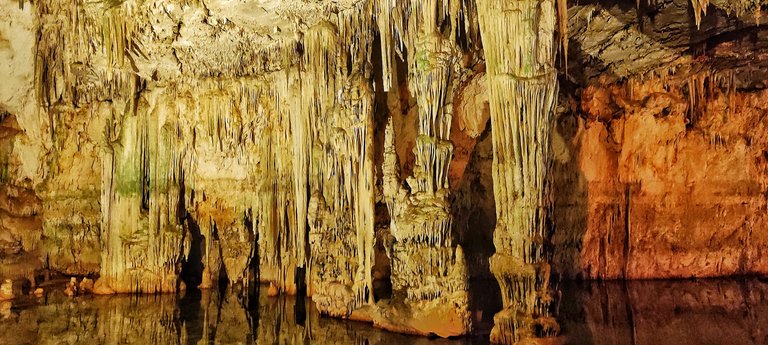
- Hall of the Royal Palace: with calcitic columns of about 9 m, the highest part reaches 18 m;
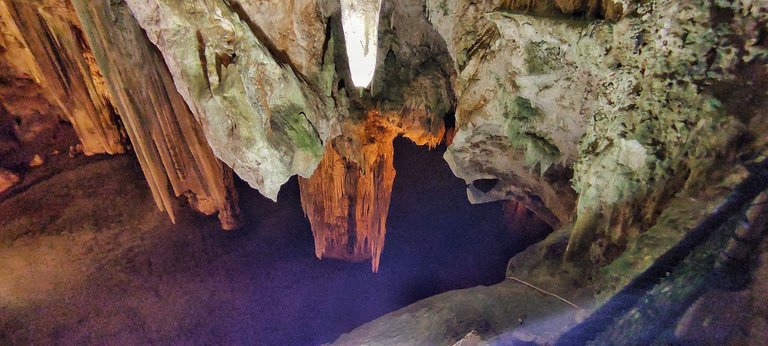
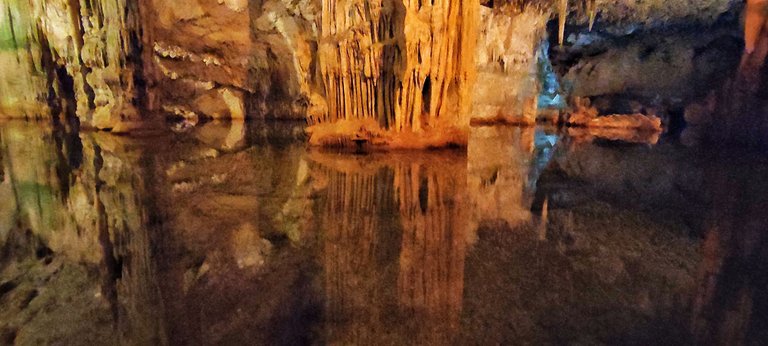
- The beach of the pebbles that today unfortunately are no longer present;
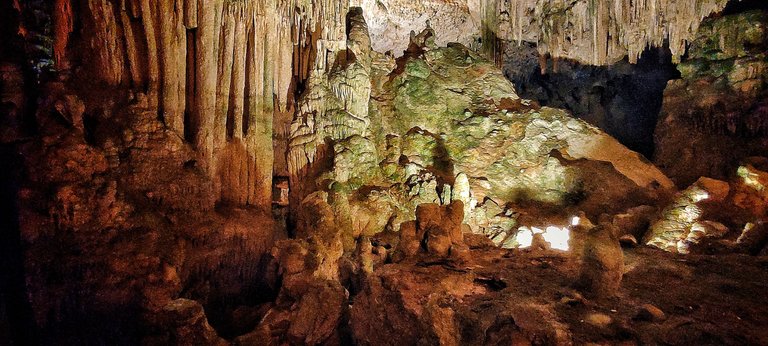
- Room of the Organ: room that contains a great column denominated organ for its particular shape;
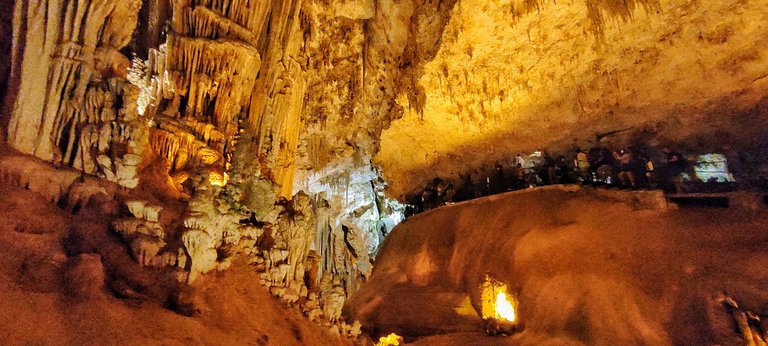
- Tribune of the Music: almost a balcony above the hall of the Reggia and on the lake.
The path accessible to the public covers only a few hundred meters of the cave, in reality there are miles of paths inside that contain numerous lakes and many rooms carved by the millennia inside the karst rock.
Stalagtites and stalagmites
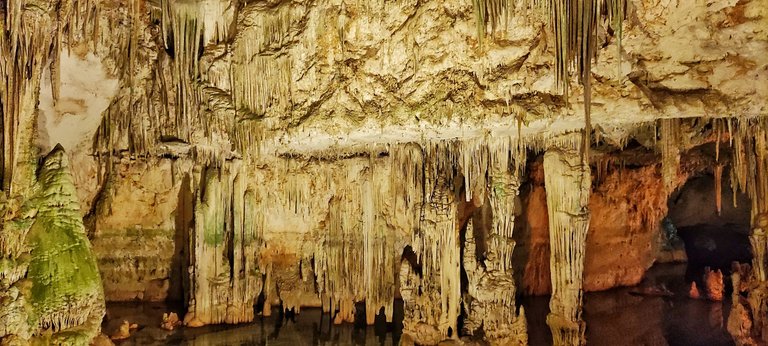
The most beautiful things about the caves are the stalactites and stalagmites and... believe me, in the cave of Neptune they are really beautiful! 😉
These are mineral formations that are created inside the cavities of the calcareous rocks, which, according to their direction, are called stalagmites:
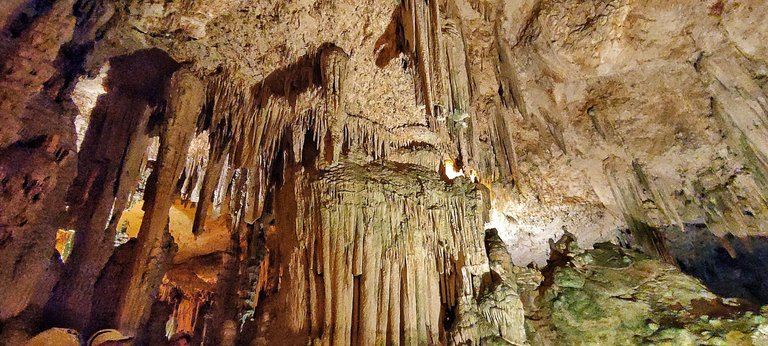
- Stalangtites: if they have a conical shape that starts from the ceiling of the cave and points downward;
- Stalangmite: if the cylindrical shape starts from the floor of the cave and lengthens narrowing towards the top.
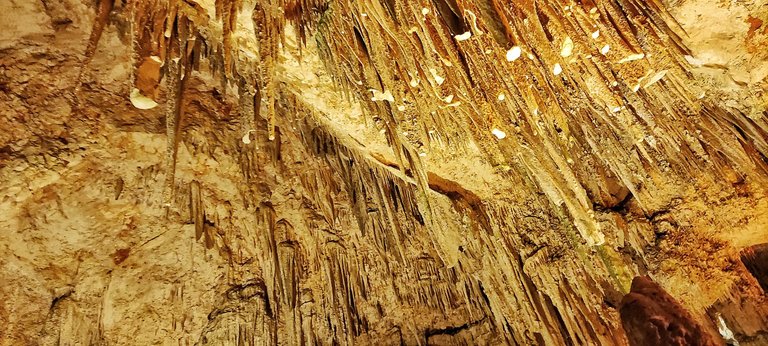
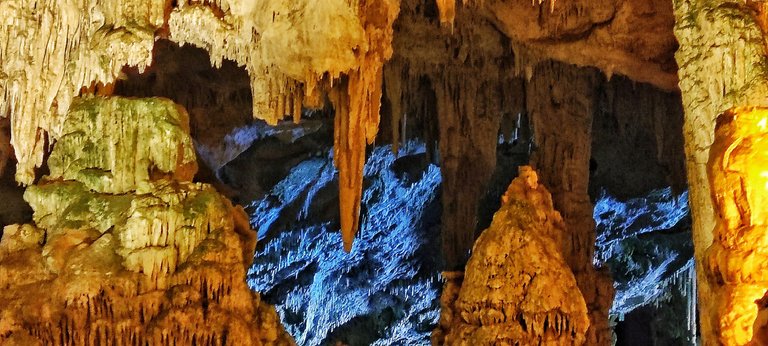
When the water inside the calcareous rock finds a cavity, it travels through it until it finds the exit, because of gravity the water flows and falls to the ground leaving behind a trace of calcareous sediment.
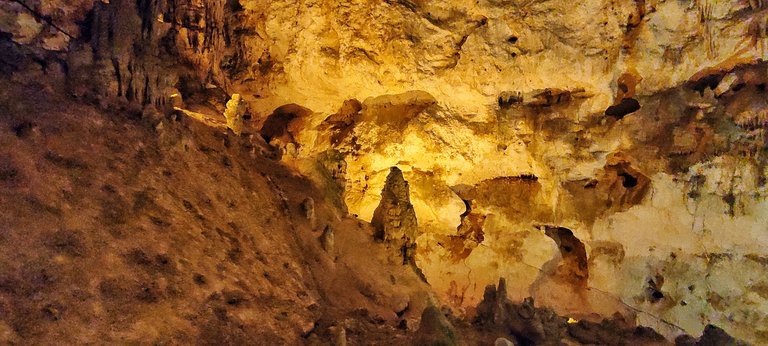
The calcareous sediments during the various deposits accumulate and are pushed by the force of gravity downwards creating a "stalactite".
Similarly, water falls from the cavity onto the floor exactly at the point below the stalangtite, the calcareous sediment deposits that are within the water are released to the ground and layer after layer stretch upward forming the "stalangmites".
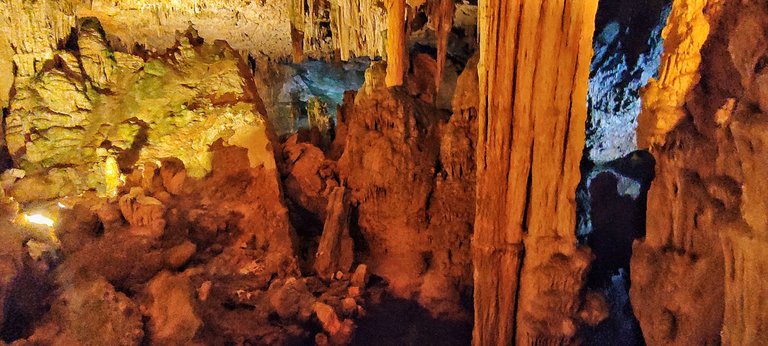
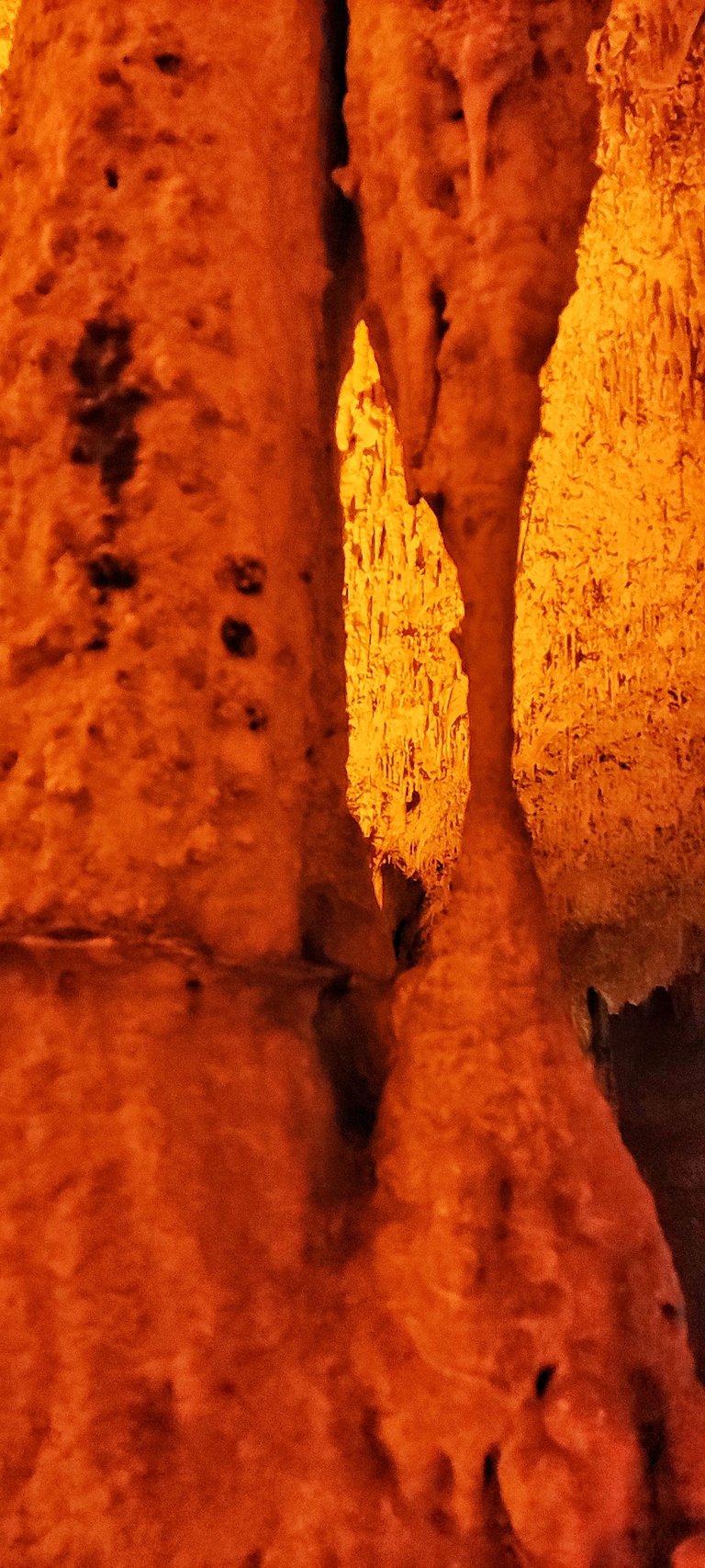
Over the millennia, the stalangmites lengthen downward and the stalagmites become taller and taller until these two limestone formations meet and they form a "column".
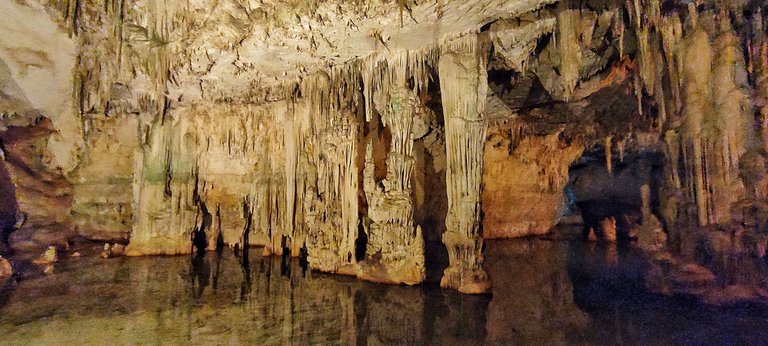
The formation of stalactites and stalagmites takes tens of thousands of years for each millimeter of deposit, which means that the delicate limestone formations must be protected as a phenomenon of infinite value.
Now let's see some particular images of this beautiful cave 😍
Some particular shots
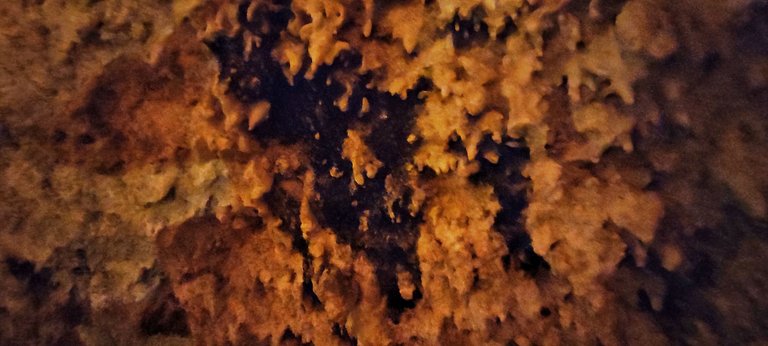
Along the cave you can see some black machines on the walls, these are the signs of the "flashlights" that were used during the previous centuries by the explorers of the cave.
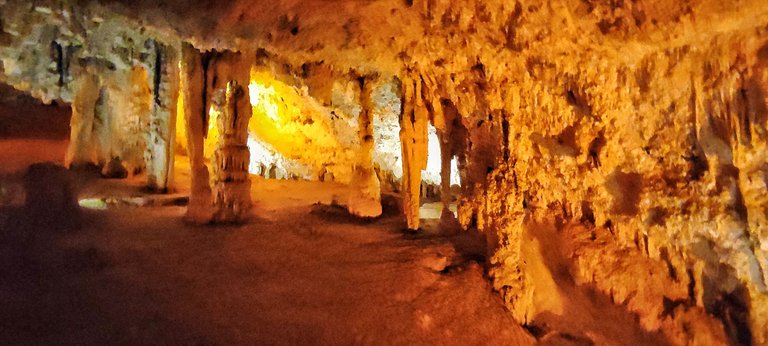
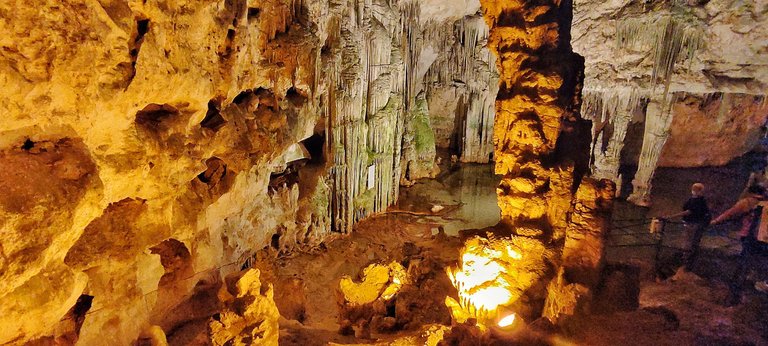
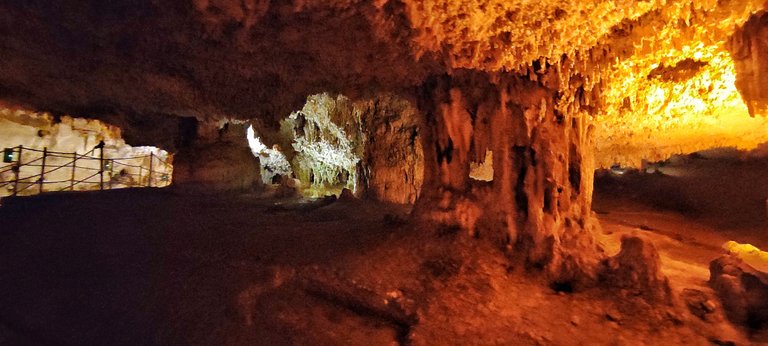
here we can see some shots of the main cave's rooms, as you can see each room is very large but is not so easy to reach because of the ceiling height which is sometimes very low.
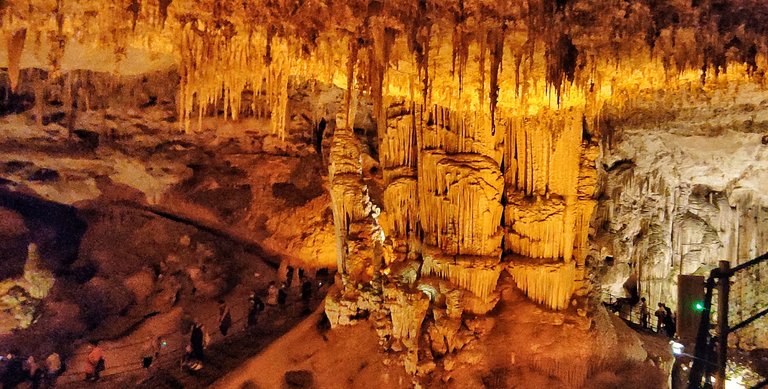
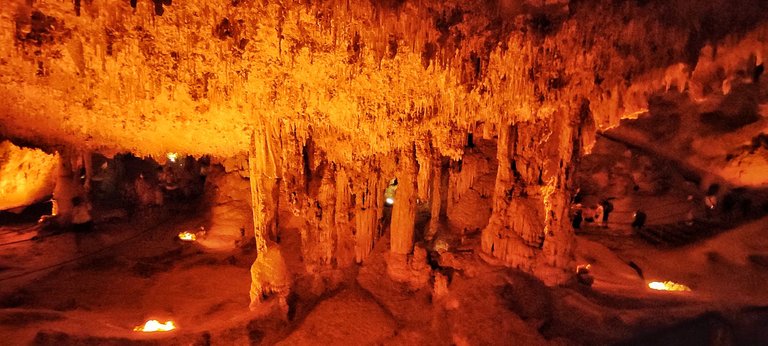
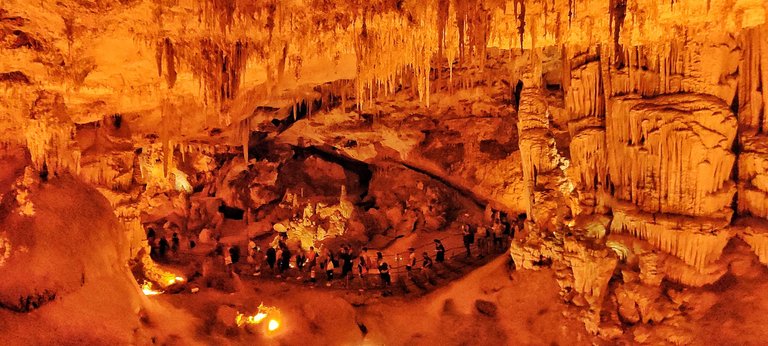
Some very big columns, the red light is due to the artificial lighting installed inside the cave to allow the access of the turist groups.
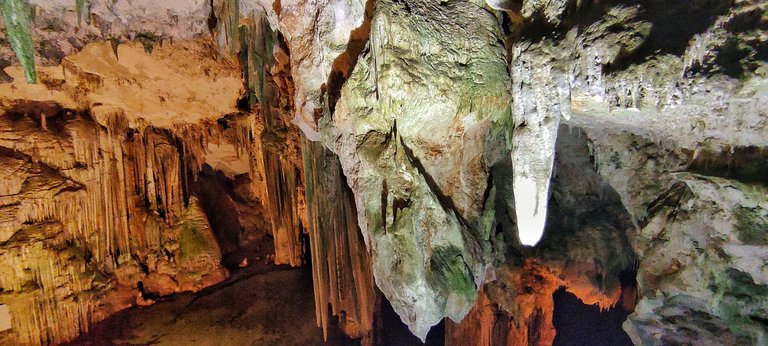
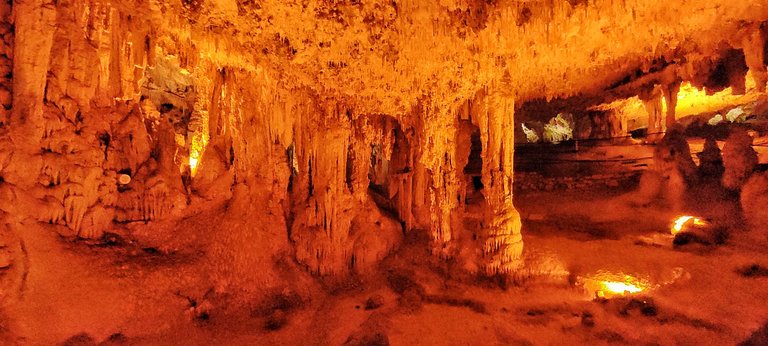
Two scenarios you can see in the final room of the cave, where the celing is very low.
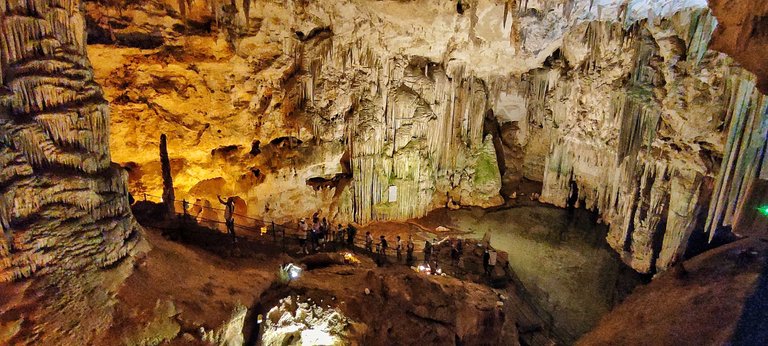
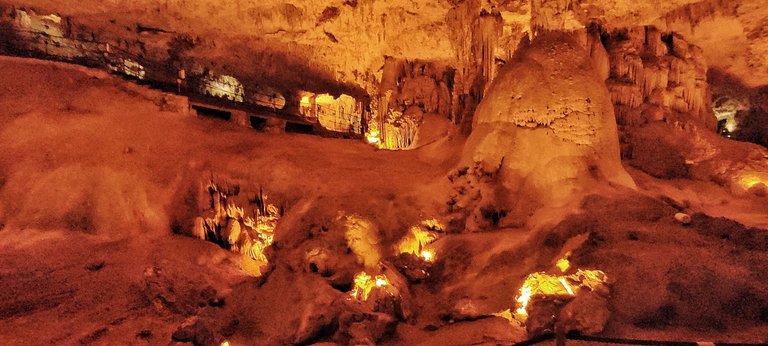
In this two pics you can see the route that must be taken when entering the cave to get to the tribune of music.
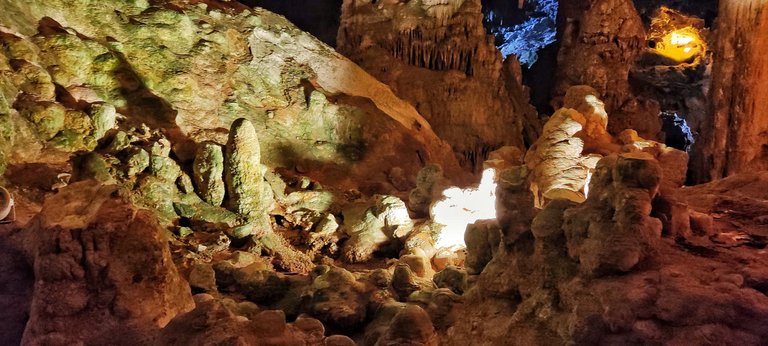
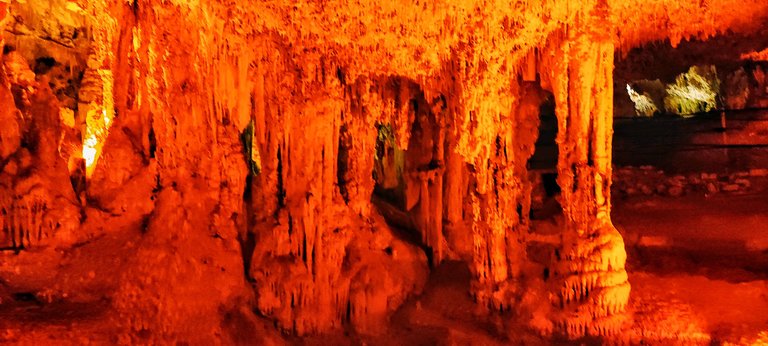
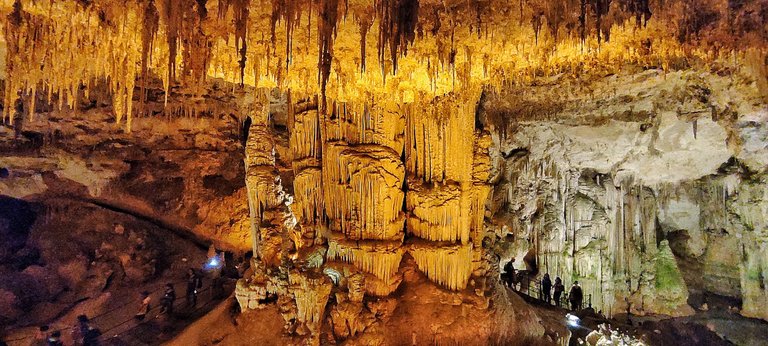
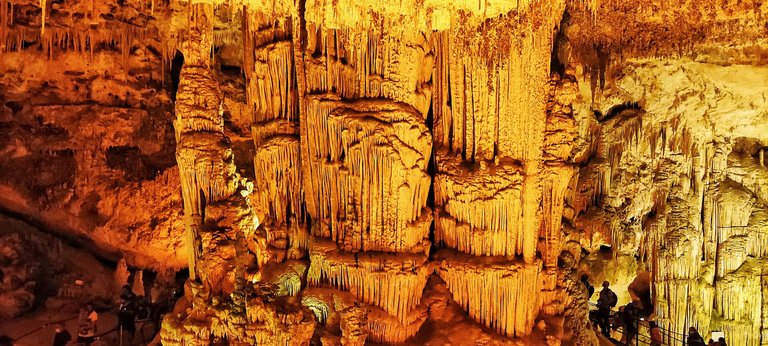
This is the largest column you can find in the middle of the cave, it is formed by a lot of columns and it is the oldest part of the cave.
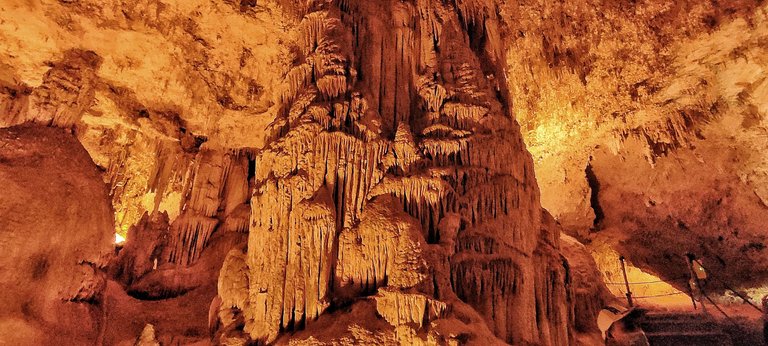
This is another particular column, very big on the base, in the inner part, this column is empty.
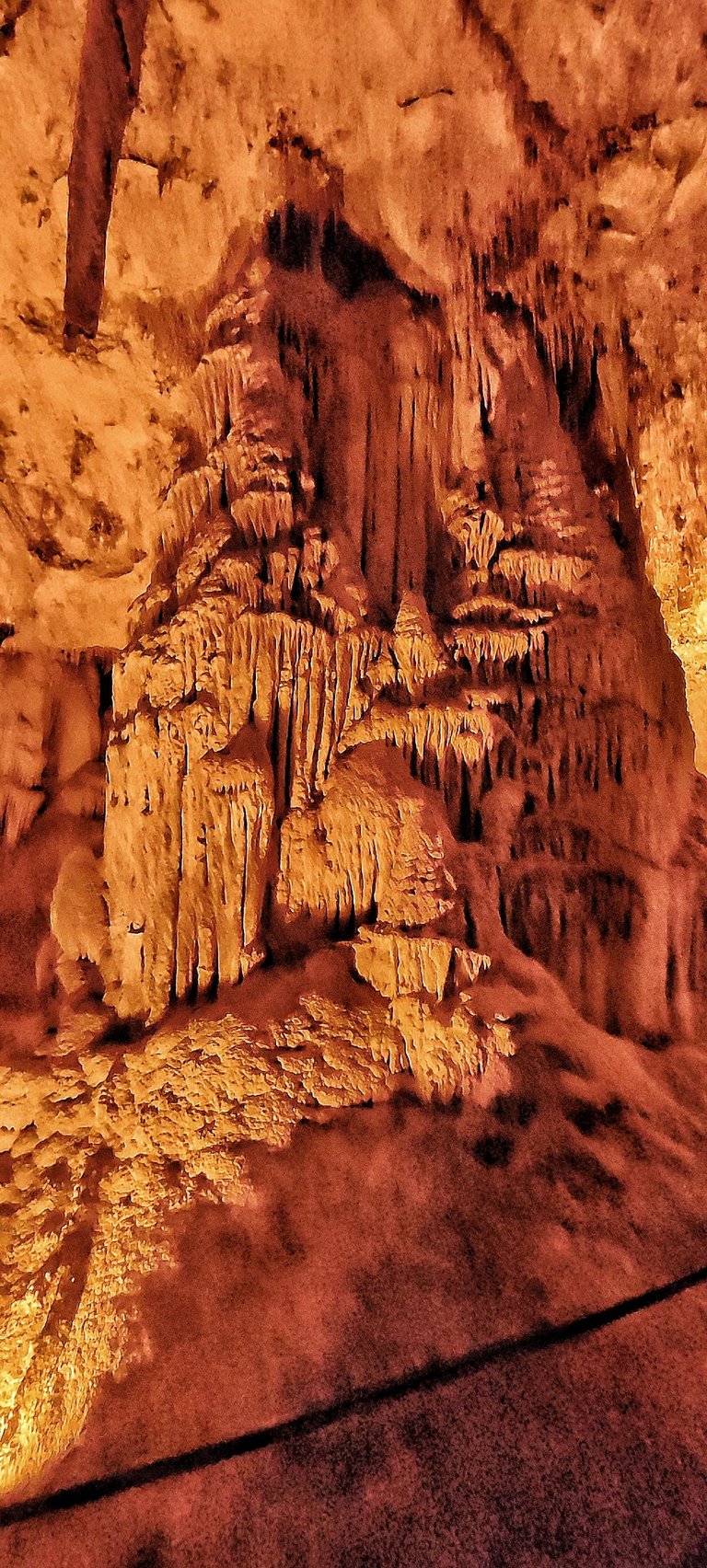
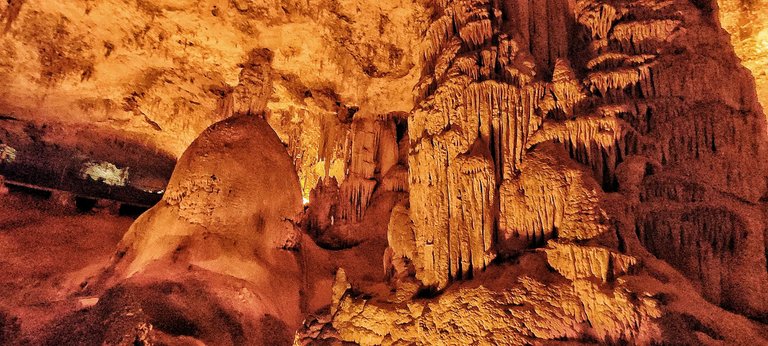
Two other columns, as yopu can see in the second photo there is a particular one called "The dome", because of its shape reminiscent of a church dome.
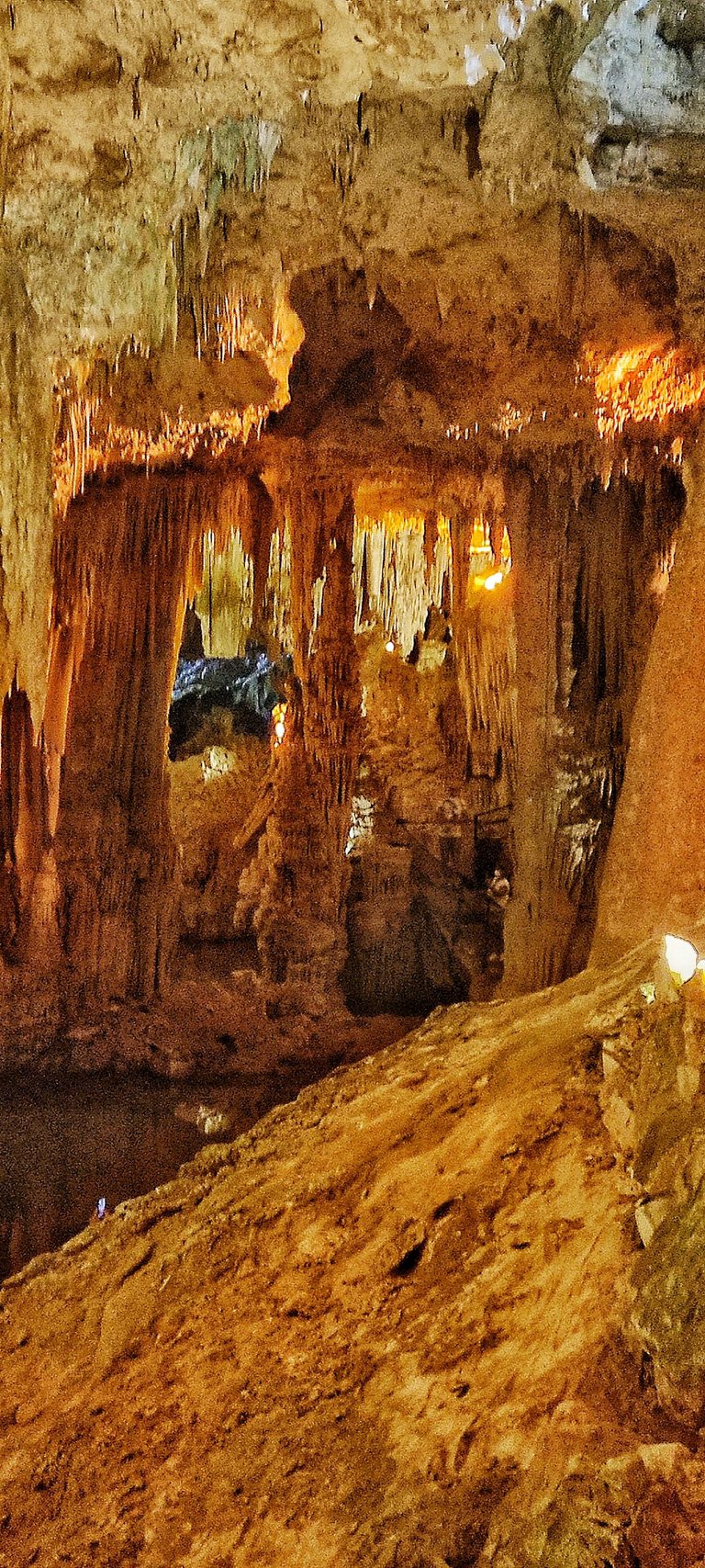

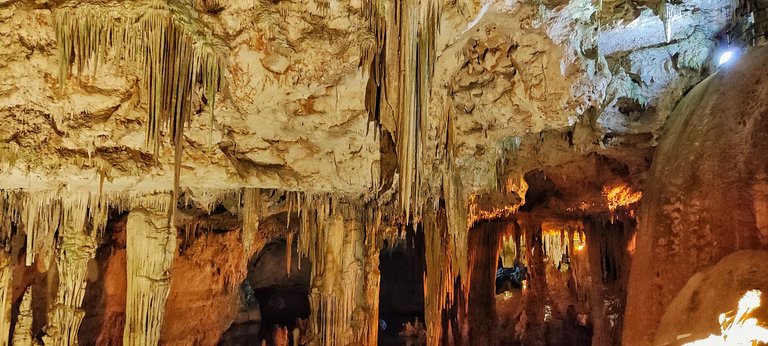
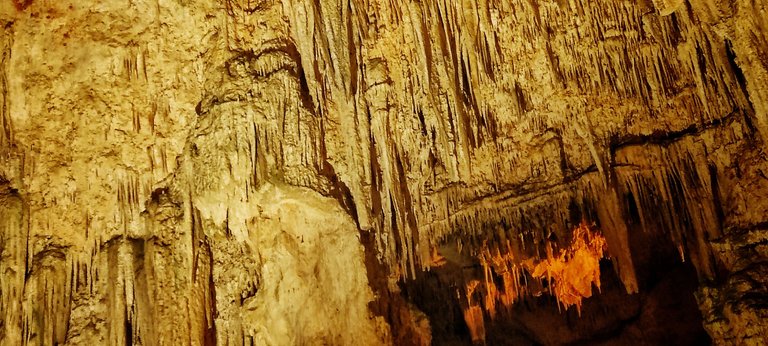
In this pics you can see the youngest part of the cave, the stalangtites and the stalangmites are more thin and linear.
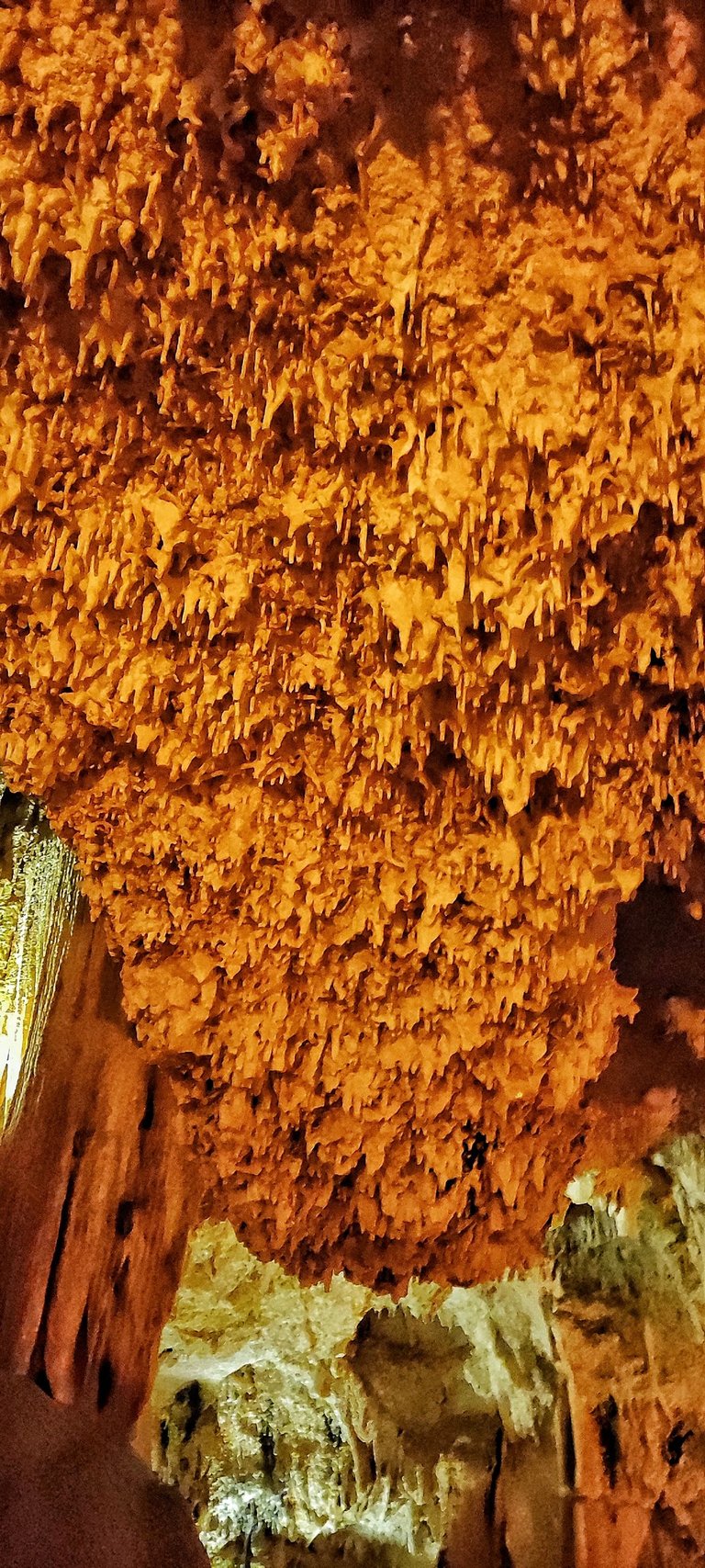
This is a new limestone formation that may become a new column in many, many years.
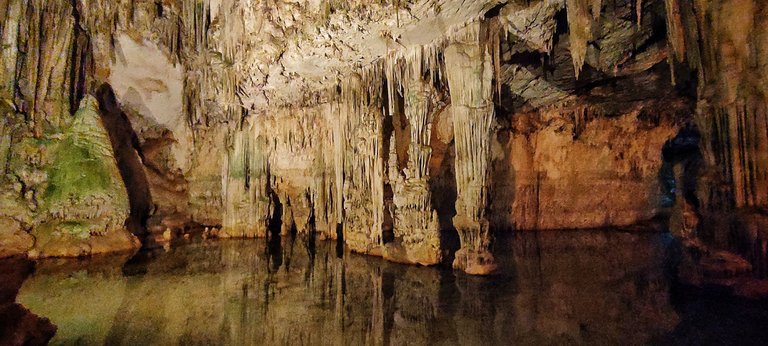
This is my favorite shot of this adventure.
Conclusion
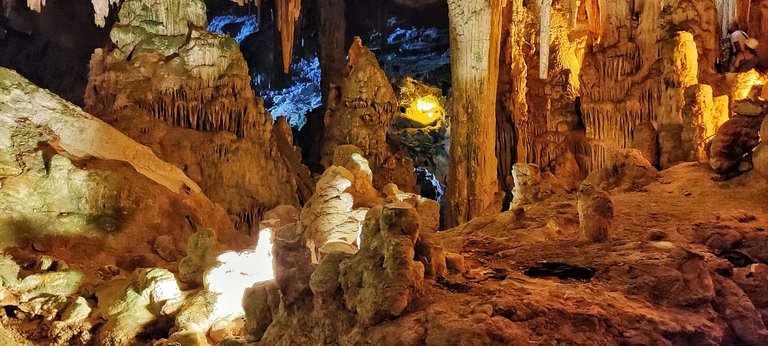
Neptune's cave is really a unique natural spectacle, in Italy there are many caves that can be explored, and this is definitely a fantastic example.
I recommend you to go violista to this beauty if you are in Sardinia.
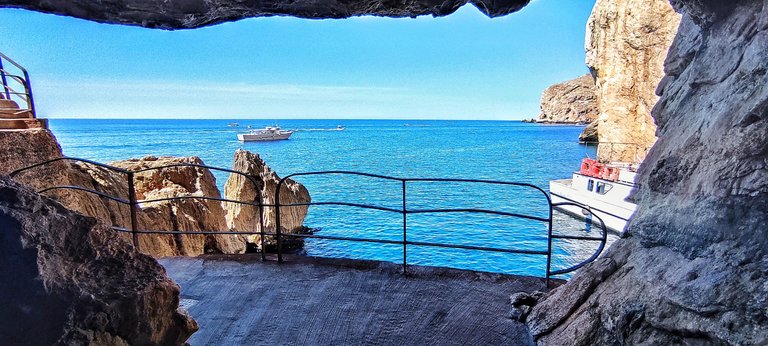
Time to get out of the cave and back into the sunlight, 654 uphill steps await us! 💪
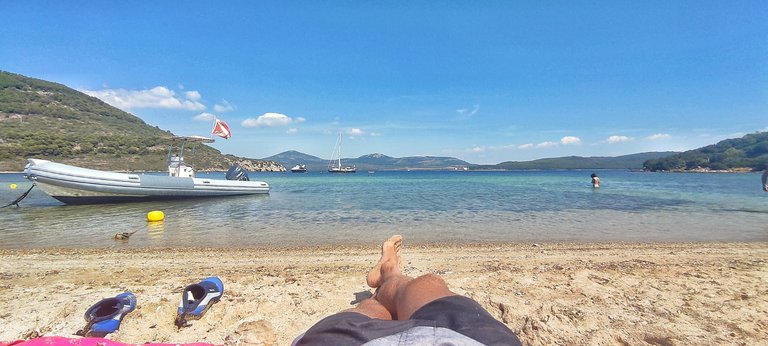
Then we just have to relax a bit in one of the beautiful beaches that are located close to Capo Caccia ... this time we really deserved it! 😎
And you? Did you know Neptune's Cave? Do you like this kind of adventures?
If you liked my post check my profile and my posts and add me to see more contets like this:

What a spectacular place! I have not yet had the pleasure of visiting Sardegna. Congratulations on the post, an excellent guide throughout!
Thanks for the support my friend! I'm happy you liked it :)
Rischio di essere ripetitivo: immagini fantastiche dalla Sardegna!
Grazie @benchwarmer, hai ragione! Ho fatto un bel viaggetto lungo a Settembre e ho tanti posti da condividere qui su #hive.
It is an amazing place! Thanks for sharing places I haven't even heard of. This cave is beautiful
I'm happy you like it! 😊
Caspita è un luogo incredibile! Neanche la computer grafica riuscirebbe a ricreare tanta bellezza
Si è una figata pazzesca!
Splendide foto specialmente quelle all'interno della grotta, un vero spettacolo.
Grazie, è spettacolare da fotografare, ogni centimetro quadrato è un' opera d'arte
You took a very beatifull photos. The place you visited must be amazing and I didn't know it! 😀
Yes it's very beautiful, if you will go to Sardinia you have to go there, if you like climbing and mountains and rocks is a perfect place 😊
what a great place to visit. lots of wonderful shots
Yes it's wonderful! Is not necessary to be a good photographer, the place is too much beautiful 😆
That sea looks amazing. Quite an exercise, 654 steps!
Yes it's hard when you have to raise, under a hot sun 🔥 but is still amazing.
Congratulations, your post has been added to Pinmapple! 🎉🥳🍍
Did you know you have your own profile map?
And every post has their own map too!
Want to have your post on the map too?
Congratulations @will91! You have completed the following achievement on the Hive blockchain and have been rewarded with new badge(s) :
Your next target is to reach 400 replies.
You can view your badges on your board and compare yourself to others in the Ranking
If you no longer want to receive notifications, reply to this comment with the word
STOPDaily Travel Digest #1350.
Become part of our travel community:
- Join our Discord
- Learn more about our travel application
Hiya, @LivingUKTaiwan here, just swinging by to let you know that this post made it into our Top 3 in Your post has been manually curated by the @pinmapple team. If you like what we're doing, please drop by to check out all the rest of today's great posts and consider supporting other authors like yourself and us so we can keep the project going!